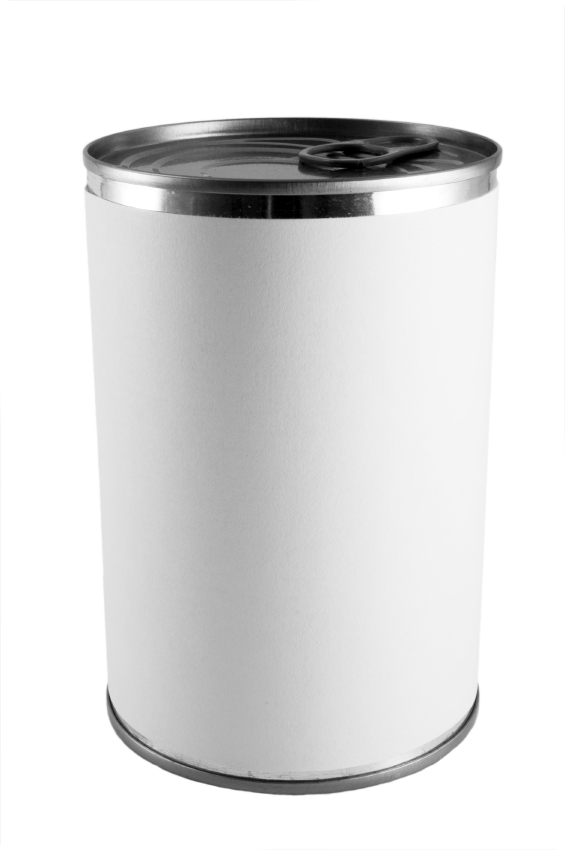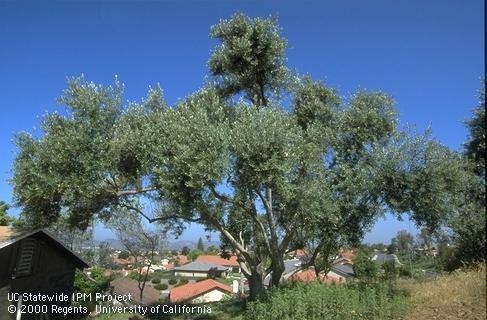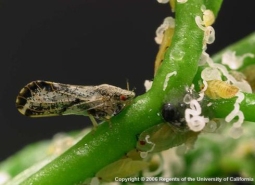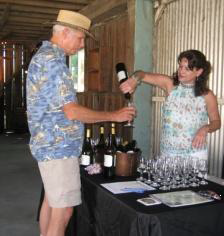
Posts Tagged: oil
It's That Season Again When Growers Are Being Asked to Buy Products
Growers are faced with an ever-changing list of commercial “tools”, each with the promise of providing some advantage to the farmer. Frequently, these are new fertilizer mixes presented as proprietary cocktails promoted and dispensed with promises of a multitude of profitable (yet improbable) benefits to the buyer. With the large number of new products available, and the number of salespeople promoting them, it is often difficult for growers to distinguish between products likely to provide real benefit, and those that may actually reduce the profitability of the farm.
In all situations when a company approaches the University or a commodity research board with a new product or technology for sale to California growers, these institutions act as grower advocates. They are charged with sorting through the available information; asking the right questions; getting the necessary research done if the available information warrants this pursuit; disseminating accurate information on these new technologies and products, and doing all that can help maximize grower profits now and in the future. When approached with a new product or technology it is obligatory to challenge claims with the following questions:
Is there some basic established and accepted scientific foundation on which the product claims are made?
Language that invokes some proprietary ingredients or mysterious formulations, particularly in fertilizers mixes registered in the State of California, raises red flags. A wide range of completely unrelated product benefit claims (such as water savings, pesticide savings, increased earlier yield) raises more red flags. Product claims that fall well outside of any accepted scientific convention generally mean the product is truly a miracle, or these claims are borderline false to entirely fraudulent. Some of the water treatment products on the market fall into this category and can easily be checked against some of the studies found at this site: http://www.chem1.com/CQ/index.html
Has the product undergone thorough scientific testing in orchards?
Frequently, products are promoted based on testimonials of other growers. While testimonials may be given in good faith, they are most often not backed up by any real scientific testing where a good control was used to compare orchard returns with and without the product.
A “test” where a whole block was treated with a product and which has no reliable untreated control does not meet accepted standards for conducting agricultural experiments. Also, a treated orchard cannot reliably be compared to a neighboring untreated orchard; and a treated orchard cannot be compared to the same orchard that was untreated the previous crop year. Even a test with half a block of treated trees and half untreated is not considered dependable by any known scientific standard of testing.
Only a well designed, statistically replicated, multi-year trial allows for direct comparison of untreated versus treated trees with statistical confidence. Verifiable data from tests that meet acceptable standards of scientific design, along with access to raw baseline (before treatment) yield data from the same trees (preferably for the two years prior) should be used to determine the validity of test results provided.
Are the test results from a reliable source?
If the testing were not done by a neutral party, such as university scientists, agency, or a reputable contract research company using standard scientific protocols, this raises red flags. If the persons overseeing the tests have a financial interest in seeing positive results from the product, it raises red flags.
Does the product have beneficial effects on several unrelated farm practices?
A product that increases production of trees, makes fruit bigger, reduces pests, reduces water use, and reduces fertilizer costs, is more than a little suspicious. In reality, if such a product really existed, it would not need any testing at all because its benefits would be so obviously realized by the grower community that it would spread rapidly by word of mouth and embraced by the entire grower community.
Are other standard and proven farm products put down in the new product sales delivery?
If a new product vendor claims that their product is taken up 15 times faster than the one growers are currently using, or is 30 times more efficient, it probably costs 15 to 30 times more per unit of active ingredient than the standard market price. Growers should always examine the chemical product label to see what active ingredient they are buying. There has to be a very good reason to pay more for an ingredient where previously there had been no problem supplying the same ingredient at a cheaper price to trees in the past.
So what is a grower to do ?
New products come and go. Snake oil products often disappear rapidly, when their efficacy fails to materialize after application. Products that confound their purported results with fertilizers or growth stimulators can persist, but eventually they too fail to live up to expectations at some point and will fade from popularity. Try to obtain some kind of consensus with university-based research or other peer reviewed research reports, field efficacy trials that you run for yourself, and not on the testimonials of others. If you decide to conduct your own trials, they must be replicated and statistically analyzable, otherwise they are little more than anecdotal observations that have little value in quantifying the effects of a product or practice. For more help with trials, seek out University Extension advisors and specialists. This is their job, and they are willing partners in field research. After awhile, you will be able to ascertain the nature of the “oil” before you purchase it.

unknown product
California Olives and the Mystery of Santa Cruz Island
Recent advances in understanding the history of olive domestication
Elizabeth Fichtner, Farm Advisor, UCCE Tulare and Kings Counties
 Olives are thought to have first been domesticated in the northeastern Levant, an area near the border of present-day Turkey and Syria. Map captured from Google Maps. |
With the emergence of the California olive oil industry, the state has witnessed a dramatic diversification in the olive cultivars grown commercially. Our mainstay black ripe olive industry, dominated by the ‘Manzanillo' olive, is now combined with increasing acreage of Spanish, Greek, and Italian cultivars used to create high quality, extra virgin oil. The historic table olive industry of California still represents around 18,000 acres of olives in the state, while approximately 40,000 acres are currently devoted to oil production.
Although olive cultivation in California is relatively new (dating back to the historic Spanish Missions established by Franciscan priests), olives are of key importance in the history and culture of the Mediterranean basin. A recent publication by a group of European, American, and North African scientists has re-evaluated the location of the domestication of the olive, providing genetic evidence that domestication occurred in the northeastern Levant, close to the present-day border of Syria and Turkey.
To complete the study, researchers collected plant material from nearly 2000 trees, sampling both wild oleaster populations and domesticated cultivars of olive. World Olive Germplasm Banks in Córdoba (Spain) and Marrakech (Morocco) served as sources of the majority of cultivars included in the study. Researchers utilized the genetic sequences of plastids (ie. chloroplasts) to discern differences between cultivars and wild oleaster populations. Plastids are organelles (structures inside cells) that contain their own DNA. Since plastids are generally inherited from one parent (similar to mitochondria), their genetic sequences are more conserved then that of nuclear DNA, which is contributed by both parents. Since olive is a wind-pollinated crop, nuclear DNA may be disseminated over large distances.
The genetic analysis of wild populations indicates three distinct lineages of olive: the Near East (including Cyprus), the Agean area, and the Straight of Gibralter. These three wild populations are likely linked to refuge areas where populations persisted through historic glaciation events. Interestingly, the geographic distribution of these three populations also corresponds to the subdivisions of the olive fruit fly, suggesting that these regions offered shared refuge habitat for both the host and the pest. The wild oleaster population in the eastern Mediterranean was found to be more diverse than previously thought and ninety percent of the present-day cultivars analyzed in the study matched this group. Common olive cultivars grown in California, including, Sevillano, Arbosana, Arbequina, and Koroneiki, all belong to this group originating in the eastern Mediterranean.
As a result of this study, it is proposed that the initial domestication of olive took place in the northeastern Levant; subsequently, plant material was disseminated to the whole Levant and Cyprus before being spread to the western Mediterranean. After these initial domesticated trees spread throughout the Mediterranean basin, they likely underwent subsequent domestication events by crossing with wild oleasters, thus introducing genetic material from the other two ancient western Mediterranean lineages.
Such studies may appear purely academic; however, they can also address more timely questions and assist in characterizing cultivars. For example, a 2010 study in California made genotypic comparisons between historic olive plantings in Santa Barbara, CA and at Santa Cruz Island, CA. The study elucidated that the olives on Santa Cruz Island, planted in the late 19th century are different than other historic olive plantings in Santa Barbara, CA. Olives planted at the Santa Barbara Mission in the late 18th century are the ‘Mission' cultivar, whereas those on Santa Cruz Island (Figure 3) are generally ‘Redding Picholine.' Interestingly, the olives on Santa Cruz Island are thought to have been planted for oil production, but there are no historic reports of harvest or sale of a crop. Additionally, the Santa Cruz Island olives have become somewhat invasive on the island due to their propensity to establish from seed. As a result of genotypic analysis of these populations and the fact that ‘Picholine' makes an excellent rootstock due to its ease of propagation from seed, it is hypothesized that the ‘Picholine' variety was intended as a rootstock, but the grafts never took. Consequently, maturation of a ‘Picholine' orchard may have just been an accident, a mistake, or simply bad luck. The completion of this local population genetics study may have helped explain the unsolved mystery of the historically unharvested trees on Santa Cruz Island.
Find Santa Cruz Island.
Besnard, G., Khadari, B., Navascués, M., Fernández-Mazuecos, El Bakkali, A., Arrigo, N., Baali-Cherif, D., Brunini-Bronzini de Caraffa, V., Santoni, S., Vargas, P., Savolainen, V. 2013. The complex history of the olive tree: from Late Quaternary diversification of Mediterranean lineages to primary domestication in the northern Levant. Proc R Soc B. 280: 20122833.
Soleri, D., Koehmstedt, A., Aradhya, M.K., Polito, V., Pinney, K. 2010. Comparing the historic olive trees (Olea europaea L.) of Santa Cruz Island with contemporaneous trees in the Santa Barbara, CA area: a case study of diversity and structure in an introduced agricultural species conserved in situ. Genet Resour Crop Evol 57:973-984.

olive tree
Where is that Oil Pipeline?
It just came to my attention that there is a map of all the oil pipelines in the US. If you go to the bottom/left side and put in the state and county, it will be revealed. This is mainly for those growers who need to be aware of pipelines and tillage or any other work in the aerea of a pipeline.
https://www.npms.phmsa.dot.gov/PublicViewer/
pipeline
Organic Control of Asian Citrus Psyllid is Challenging
With the detection of Huanglongbing (HLB) in California in 2012 and 22 additional cases reported during 2015 through June 2016 there is a major concern among citrus growers about the spread of this incurable bacterial disease. The vector of the disease, the Asian citrus psyllid (ACP), is a hardy insect with good dispersal capabilities and can be found in many southern California citrus groves today. With no direct cure for HLB at present, the only option for growers to combat the disease is to control the psyllid. This can prove difficult for conventional citrus growers with broad spectrum insecticides, but for organic citrus growers, which grow an estimated 7% of citrus in California, the task is even more difficult with the currently available options.
Entrust (spinosad) + oil, Pyganic (pyrethrin) + oil, and oil alone are currently the recommended and most widely used insecticide options for organic growers (UC IPM Guidelines for Citrus). While these insecticides are fairly effective in killing ACP if they make direct contact, the residual life of these pesticides is very short (days) compared to conventional insecticides (weeks to months). For example, in our petri dish studies, 10 fl oz/acre Entrust SC + 0.25% Omni supreme spray oil caused 89% mortality, 17 fl oz/acre Pyganic 5.0 EC + 0.25% Omni supreme spray oil caused 73% mortality and 0.25% Omni supreme spray oil caused 42% mortality when 1st-2nd ACP nymphs were exposed to treated leaves one day after application. Nymphal mortality continued to decline for the Entrust + oil treatment (69% mortality) and even more severely declined for Pyganic + oil (27% mortality) 3 days after treatment. In contrast, one-day-old residues of a conventional insecticide, the neonicotinoid 5.5 oz Actara (thiamethoxam), resulted in more than 95% mortality of nymphs and mortality remained high for more than a month.
Studies of grower orchard treatments confirmed laboratory studies that showed a short residual effect of organic treatments (Entrust + oil and oil alone) compared to conventional insecticides (Actara). We monitored changes in population densities of ACP (adults by tap, nymphs and eggs by flush examinations) in the fall of 2015 before and after a grower sprayed separate orchards with one of three insecticides; 1) 1.25% 440 Supreme Spray Oil by ground application (400 gpa), or 2) 9 fl oz Entrust SC + 1% oil by air (50 gpa), or 3) 5.5 oz Actara by air (50 gpa). The oil treatment had little effect on the adult population, but significantly reduced psyllid nymph densities for 17-24 days. Entrust was completely ineffective in controlling psyllid nymphs, but suppressed adult and egg populations for about 14 days. Actara, a conventional insecticide, was the most effective treatment in the study and provided more than 5 weeks of both adult and nymph control. Because of the short residual effect of organic insecticides in citrus, repeat treatments are needed at a frequency of about every 2 weeks for ACP control.
Tamarixia radiata wasps released for biological control of ACP provide 20% to 88% parasitism depending on geographical location and time of year. If there were no disease to be concerned about, this level of parasitism by Tamarixia would be sufficient to protect citrus from the feeding damage of the psyllid. However, the disease spreads rapidly with just a few psyllids and so a greater level of control is needed. Generalist predators, such as lady beetles, lacewings and assassin bugs, also assist with control. Argentine ants can severely disrupt this parasitism by protecting psyllids from natural enemies. Unhappily, Entrust + oil, thought of as a very selective insecticide combination, was found to be highly toxic to adult Tamarixia wasps exposed to 3 day old residues. Thus, the organic insecticide that is the best for controlling the psyllid pest is not compatible with the parasitoid natural enemy, limiting our ability to use integrated strategies to control the psyllid.
At present, it is not mandatory, but is strongly recommended, that all southern California citrus growers treat their orchards in an area wide manner. The area wide program consists of coordinated treatments twice a year (winter and fall), and additional treatments in between. Due to the short residual nature of organic insecticides, organic applications should be applied twice within 10-14 days of each other for every single conventional insecticide application. This is especially important for younger groves as ACP nymphs thrive in new flush. Organic growers have a tough decision to make between treating frequently for ACP and the high cost associated with those treatments or transitioning into conventional management in order to more effectively control ACP. Additional solutions are needed for organic citrus.
UC IPM Guidelines for Citrus: Asian Citrus Psyllid. http://ipm.ucanr.edu/PMG/r107304411.html

ACP adult and nymph
Evaluating New Products
Evaluating claims of new products that could potentially improve yield and tree health is a daunting task. Every week I get calls and literature from people promoting fertilizers and techniques that "resist insects," "reduce salt levels in the soil," "increase crop quality," "release that natural fertility of your soil," and numerous other claims. There just is not enough time in the day to approach each and every one of these materials or techniques, even though some may, in fact, be promising.
So what does a grower do? You hear about a new product. It only costs $20 an acre to apply. Might as well fly it on all 50 acres. But then, how do you know it has done anything? What results do you have to compare it with? Last year's yield which was miserable? We know how variable avocado yields are, so last year's harvest may not be a good comparison.
When we conduct field trials, we assume a clear comparison is available to test the effects of the treatment. With field trials, there are usually small plots, repeated several times (at least three), and arranged in an apparent haphazard (random) fashion. The reason is threefold: 1) to account for variability in the field, 2) to prevent a systematic bias in favor of one treatment over another and 3) to see if differences in treatments are due to chance or to the superiority of the treatment.
How are observational trials different from replicated one? The big difference is that they are not replicated. Each treatment occurs only once, so we have no measure of the natural variability in the field or trees. As a result, we risk thinking we have a difference due to treatment which is actually due to field variability. Without replication there is no way to tell.
Let's examine this replication idea a little more closely. We had a frost trial where we applied copper or a water control spray to young trees in November. Copper is a noted bactericide and the idea was to control the frost-nucleating bacteria. Forty trees, randomly spaced in the orchard were sprayed with either a dilute copper spray according to instructions or water alone. We evaluated frost damage to the trees in January. The first counts showed 40% frost damage with the copper spray and 60% with the water alone. Great. Let's go out and spray the whole orchard next year with copper. However, successive counts showed 50% frost damage with the copper and only 30% from the water. In the end, there was no significant difference to trees that had been sprayed with either material.
These results show the natural variability in biological systems and demonstrate the disadvantages in looking at results from a non-replicated trial based on a single year. This becomes even more important when interpreting information from a trial site different from your own. If every grower sprayed a non-replicated treatment at their own ranch, the risk of coming to the wrong conclusion about that treatment at each location is still 50%. Just like flipping a coin. Is that worth spending money on?
As each of the variables (soil type, irrigation quality, management, etc.) increases, the risk of making a poor decision about a product or practice increases, as well. You can see that there are difficulties associated with relating information from a non-replicated trial based on a single year of data at a different location to your own situation.
How does someone go about evaluating a new practice or material at home without going through all the complications of a complicated research trial? Mary Bianchi, farm advisor in San Luis Obispo and I came up with a little checklist.
- Be conservative in your approach and critical observations. Resist the urge to spray the whole grove. Leave something, so that a comparison can be made. Preferably run a side-by-side comparison.
- Use consistent farming practices across all areas of the trial.
- Compare the new practice to one which is a standard for your operation.
- Don't bias your results by implementing the new practice where it stands to have the best effect anyway. For example, don't spray boron on the trees that always give a good yield.
- Run the test more than one year and in more than one location, especially if the new practice is costly.
- Talk to the industry and use the experience of others in different locations as a check on your own experience. A good place to swap ideas is at the California Avocado Society/University of California Cooperative Extension sponsored bimonthly meetings.

agritourism 3

